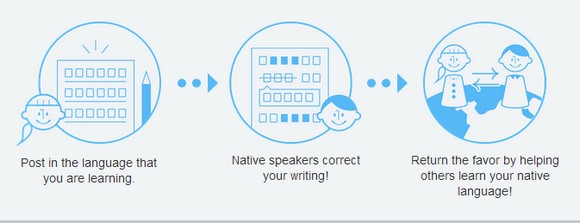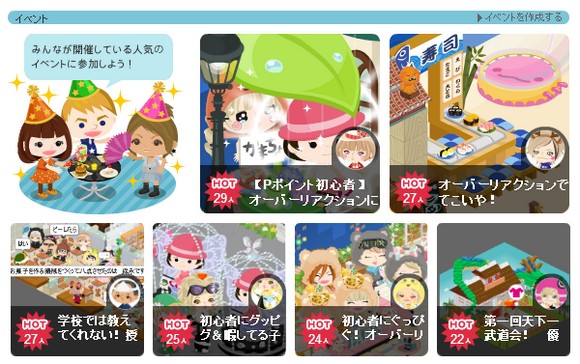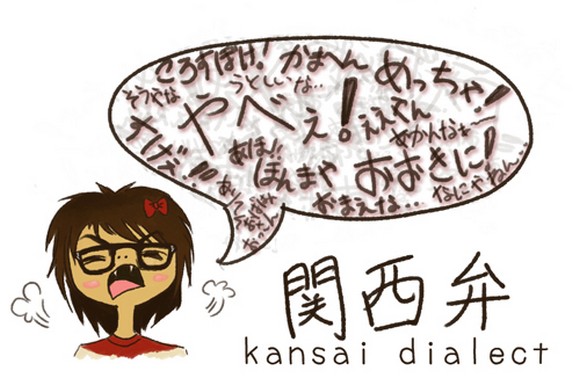
Everyone has their own studying methods, but no matter which one you choose, learning a language boils down to mastering four things; reading, writing, listening and speaking. I know people who study so hard they literally memorize words out of a dictionary. There are also the people who think that the best way to pick up a language is to live in the native country and speak the lingo as much as possible.
I believe in practicing over studying. And by “practicing”, I mostly mean “surfing the internet”. If you’re currently struggling with learning the Japanese language, or if you hate studying but would like to improve your Japanese, read on!
A quick search online called up websites stating that the amount of study hours required for a Japanese language learner to be ready for the JLPT N1 (the highest level of the Japanese Language Proficiency Test) exam ranges between 900 to 4,500 hours. Assuming that you stoically study in two-hour sessions once a week without fail, it would take at least eight years of study to prepare for the JLPT N1 examination.
It took me about five years to acquire my JLPT N1 certificate from scratch. Five years isn’t an especially short time, but considering that the examination was only held once a year when I was sitting for the exams in Singapore, I think it’s a fairly short time considering I only took classes once a week and often had to miss classes due to work commitments. I was determined on taking classes because I knew I didn’t have the discipline to self-study. The only time I really ‘studied’ per-se was when I was in class.
This is how I polished my Japanese skills with minimal studying and without even setting foot inside Japan:
1. Watch Japanese anime, movies, drama serials. Listen to Japanese songs. A lot.
It doesn’t matter if you don’t understand a thing these movies or songs are saying at first. Watch them with subs, never dubs. The whole point of watching or listening to a truckload of Japanese media is to train your ears to get used to the nuance of the language.
2. Read Japanese books or magazines which interest you.
My Japanese teacher used to advocate reading the newspapers, but the problem was, there were too many difficult words and I had zero interest in current affairs. Instead, I read manga, novels and magazines that featured topics that piqued my interest, such as fashion magazines and entertainment magazines that featured my favorite artistes. Children’s books are also a good start for beginners.
Such material may not be the most “orthodox” or educational, but at least you’ll be motivated to read. If the price of Japanese books and magazines are a concern, you can always chalk up the reading meter by surfing Japanese websites such as our sister site RocketNews24 Japanese!
3. Talk to yourself (or an imaginary person).
The point of this practice is to get comfortable with speaking the language. It’s not easy to find a language partner who can practice with you at the oddest hours of the day. I used to “talk” to Rukawa-kun (from Slam Dunk) whenever I didn’t have anything to do, such as when I was waiting for a bus, or when I was walking home alone. Since it’s an imaginary person you’re talking to, you wouldn’t have to worry if the topics are mundane and repetitive, or if your Japanese is “weird”. Just blabber on in as much Japanese as you can muster. If you’re conscious of the looks from strangers around you, just pick up your mobile phone and act as if you’re on the phone.
4. Keep a blog/diary. In Japanese, of course.
Again, it doesn’t matter what you write about. Just try your best to express your thoughts in words. If you need some help with words, you can always look it up in the dictionary. Using the dictionary and subsequently writing it out helps you remember the word better. Your blog or diary will also become a good gauge of how much you’ve progressed. After some time, you’ll be able to look back at your old posts, cringe at the horrible writing, and give yourself a pat on the back for being able to tell how bad it was. If you can get your Japanese teacher to read your blog and give you feedback, all the better.
Are you giving up on the thought of mastering Japanese already? That’s just the course for beginners. Once you’ve gained a certain level of confidence in your Japanese language proficiency and would like to try interacting with native Japanese, try hanging out at the following websites!
This is a website where language learners help each other learn their native languages. You could make use of this free service alongside your blog posts. Whenever you update your blog, post it on this website as well and receive advice from native speakers. You could even make friends! It’s also nice to support other language learners by returning the favor.
Ameba is a multimedia website packed with all sorts of free functions ranging from blogs to news clips to discussion threads, and even games! The two functions I used the most were the blogs and Pigg. Ameba Pigg is a virtual community in which you can interact with other Ameba users. Create an avatar, and you’re ready to play and make friends! There are various community areas where you can “meet” and chat with others while enjoying the entertainment elements in store. Most of Ameba’s users are Japanese locals, so use the chance to make a few Japanese cyber friends!

Niconico Live allows users to stream live broadcasts on the website, and viewers are able to make real-time comments to interact with the broadcaster. As a free member, you’ll be able to tune in to the thousands of broadcasts hosted by people from all walks of life. Not only will you be able to train your ears by listening to them talk, you’ll be able to improve your typing speed by commenting, and it’s also possible to make friends through the live sessions.
A monthly subscription of 525 yen (about US$5.15) will allow you to create your own community and host your own broadcast. Use this to practice speaking and make more Japanese friends! Of course, it won’t be easy at the start, but if you’ve been building friendships as a listener in other communities, the people who have befriended you are likely to come by and support your broadcast, easing your transition from a listener to a host.
There is one thing to take note of when practicing on social websites such as Ameba and Niconico, however, and that is the use of dialects and slangs. The users are everyday people from all parts of Japan and they are likely to speak in their own Japanese dialects or slangs and internet lingo. If you’re learning Japanese for work, it’s important to be able to distinguish which are the slangs and dialects so that you don’t end up with a “remixed” version of Japanese (which is why it is still beneficial to take proper lessons alongside)!
Well, that’s basically how I improved my Japanese while having fun. Like I mentioned at the start of this post, everyone has their own methods, so be adventurous and experiment with all sorts of methods and materials to find your own secret formula! If you have any studying methods that worked for you, feel free to share them in the comments section below!
Images: We Heart It, Someecards, Sea of Shoes, Brendafloresm, Lang-8, Ameba, Niconico, C’è Crisi C’è Crisi







 RocketNews24’s six top tips for learning Japanese
RocketNews24’s six top tips for learning Japanese Our Japanese writer introduces some handy phrases so you too can speak the Kansai dialect!
Our Japanese writer introduces some handy phrases so you too can speak the Kansai dialect! Seven mistakes foreigners make when speaking Japanese—and how to fix them
Seven mistakes foreigners make when speaking Japanese—and how to fix them What’s wrong with English education in Japan? Pull up a chair…
What’s wrong with English education in Japan? Pull up a chair… North Japan prefecture creates guide to help new foreign workers understand local language quirks
North Japan prefecture creates guide to help new foreign workers understand local language quirks McDonald’s new Happy Meals offer up cute and practical Sanrio lifestyle goods
McDonald’s new Happy Meals offer up cute and practical Sanrio lifestyle goods Studio Ghibli releases new action figures featuring Nausicaä of the Valley of the Wind characters
Studio Ghibli releases new action figures featuring Nausicaä of the Valley of the Wind characters All-you-can-drink Starbucks and amazing views part of Tokyo’s new 170 meter-high sky lounge
All-you-can-drink Starbucks and amazing views part of Tokyo’s new 170 meter-high sky lounge Studio Ghibli glasses cases let anime characters keep an eye on your spectacles
Studio Ghibli glasses cases let anime characters keep an eye on your spectacles Katsudon vs. tonkatsu vs. katsu sandwich – What’s the best way to eat pork cutlet in Japan?
Katsudon vs. tonkatsu vs. katsu sandwich – What’s the best way to eat pork cutlet in Japan? Arrest proves a common Japanese saying about apologies and police
Arrest proves a common Japanese saying about apologies and police Kyoto’s 100 Demons yokai monster parade returns!
Kyoto’s 100 Demons yokai monster parade returns! Super Nintendo World expansion gets delayed for several months at Universal Studios Japan
Super Nintendo World expansion gets delayed for several months at Universal Studios Japan We try out “Chan Ramen”, an underground type of ramen popular in the ramen community
We try out “Chan Ramen”, an underground type of ramen popular in the ramen community Hamster abandoned at Tokyo ramen restaurant gets new home
Hamster abandoned at Tokyo ramen restaurant gets new home More foreign tourists than ever before in history visited Japan last month
More foreign tourists than ever before in history visited Japan last month Disney princesses get official manga makeovers for Manga Princess Cafe opening in Tokyo
Disney princesses get official manga makeovers for Manga Princess Cafe opening in Tokyo Starbucks reopens at Shibuya Scramble Crossing with new look and design concept
Starbucks reopens at Shibuya Scramble Crossing with new look and design concept Beautiful new Final Fantasy T-shirt collection on the way from Uniqlo【Photos】
Beautiful new Final Fantasy T-shirt collection on the way from Uniqlo【Photos】 Is the new Shinkansen Train Desk ticket worth it?
Is the new Shinkansen Train Desk ticket worth it? Foreign English teachers in Japan pick their favorite Japanese-language phrases【Survey】
Foreign English teachers in Japan pick their favorite Japanese-language phrases【Survey】 Beautiful Sailor Moon manhole cover coasters being given out for free by Tokyo tourist center
Beautiful Sailor Moon manhole cover coasters being given out for free by Tokyo tourist center Studio Ghibli releases Kiki’s Delivery Service chocolate cake pouches in Japan
Studio Ghibli releases Kiki’s Delivery Service chocolate cake pouches in Japan Japan’s bone-breaking and record-breaking roller coaster is permanently shutting down
Japan’s bone-breaking and record-breaking roller coaster is permanently shutting down New definition of “Japanese whiskey” goes into effect to prevent fakes from fooling overseas buyers
New definition of “Japanese whiskey” goes into effect to prevent fakes from fooling overseas buyers Our Japanese reporter visits Costco in the U.S., finds super American and very Japanese things
Our Japanese reporter visits Costco in the U.S., finds super American and very Japanese things Studio Ghibli unveils Mother’s Day gift set that captures the love in My Neighbour Totoro
Studio Ghibli unveils Mother’s Day gift set that captures the love in My Neighbour Totoro Domino’s Japan now sells…pizza ears?
Domino’s Japan now sells…pizza ears? New Japanese KitKat flavour stars Sanrio characters, including Hello Kitty
New Japanese KitKat flavour stars Sanrio characters, including Hello Kitty One of Tokyo’s most famous meeting-spot landmarks is closing for good
One of Tokyo’s most famous meeting-spot landmarks is closing for good Kyoto creates new for-tourist buses to address overtourism with higher prices, faster rides
Kyoto creates new for-tourist buses to address overtourism with higher prices, faster rides Sales of Japan’s most convenient train ticket/shopping payment cards suspended indefinitely
Sales of Japan’s most convenient train ticket/shopping payment cards suspended indefinitely Sold-out Studio Ghibli desktop humidifiers are back so Totoro can help you through the dry season
Sold-out Studio Ghibli desktop humidifiers are back so Totoro can help you through the dry season Japanese government to make first change to romanization spelling rules since the 1950s
Japanese government to make first change to romanization spelling rules since the 1950s Ghibli founders Toshio Suzuki and Hayao Miyazaki contribute to Japanese whisky Totoro label design
Ghibli founders Toshio Suzuki and Hayao Miyazaki contribute to Japanese whisky Totoro label design Doraemon found buried at sea as scene from 1993 anime becomes real life【Photos】
Doraemon found buried at sea as scene from 1993 anime becomes real life【Photos】 Tokyo’s most famous Starbucks is closed
Tokyo’s most famous Starbucks is closed One Piece characters’ nationalities revealed, but fans have mixed opinions
One Piece characters’ nationalities revealed, but fans have mixed opinions We asked a Uniqlo employee what four things we should buy and their suggestions didn’t disappoint
We asked a Uniqlo employee what four things we should buy and their suggestions didn’t disappoint Princesses, fruits, and blacksmiths: Study reveals the 30 most unusual family names in Japan
Princesses, fruits, and blacksmiths: Study reveals the 30 most unusual family names in Japan English conversation school in Japan has clever reminder that students don’t have to be perfect
English conversation school in Japan has clever reminder that students don’t have to be perfect Only one out of five Japanese people can pronounce these hiragana — can you?
Only one out of five Japanese people can pronounce these hiragana — can you? Darth Vader to Japanese dictionary released, selling like Tusken bread
Darth Vader to Japanese dictionary released, selling like Tusken bread Japanese Twitter user gives perfect comeback when grandma starts hating on video games
Japanese Twitter user gives perfect comeback when grandma starts hating on video games Want to study abroad in Japan but short on funds? The Freeman-ASIA program might be able to help!
Want to study abroad in Japan but short on funds? The Freeman-ASIA program might be able to help! Put away your textbooks, kids – the key to learning Japanese is Minecraft
Put away your textbooks, kids – the key to learning Japanese is Minecraft Struggling with Japanese? Let Tako lend you a hand…or five
Struggling with Japanese? Let Tako lend you a hand…or five Nihon-no: Is an entirely English-speaking village coming to Tokyo?
Nihon-no: Is an entirely English-speaking village coming to Tokyo? Japanese expat remembers the words that changed his life when he started working in Australia
Japanese expat remembers the words that changed his life when he started working in Australia The Japanese you learn at school vs the Japanese used in Japan【Video】
The Japanese you learn at school vs the Japanese used in Japan【Video】 “Recycling in Japan” or “Reasons to get it right and avoid eternal shame”
“Recycling in Japan” or “Reasons to get it right and avoid eternal shame” Top 10 most irritating Japanese borrowed words – Part 2 (The people’s top 10)
Top 10 most irritating Japanese borrowed words – Part 2 (The people’s top 10) Westerners in Japan – do they really ALL speak English? 【Video】
Westerners in Japan – do they really ALL speak English? 【Video】 Canadian learns to speak proper Japanese by becoming comedian, pouring tea for his master
Canadian learns to speak proper Japanese by becoming comedian, pouring tea for his master Japanese Twitter user embarrassed to learn why American friend is studying Japanese, not Chinese
Japanese Twitter user embarrassed to learn why American friend is studying Japanese, not Chinese
Leave a Reply